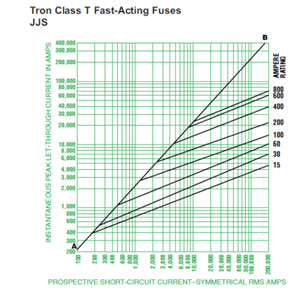Greetings to the forum.
Can someone clarify this for me. Regulation 534.4.4.6 says:
"In general, the short-circuit current rating ISCCR of an SPD, as stated by the manufacturer, shall not be lower than the maximum prospective short-circuit current at the connection points of the SPD assembly"
Then Note 1 below the regulation says:
"The SPD alone, or as an assembly in conjunction with its disconnector and/or overcurrent protective device (OCPD), is required to withstand the short-circuit current rating ISCCR as stated by the manufacturer. This value is defined and tested according to BS EN 61643-11, in conjunction with the disconnector and/or OCPD as stated by the manufacturer"
I understand that ISCCR (in kA) is a short circuit withstand capability value given by the manufacturer on the condition the maximum upstream protective device rating is not exceeded.
If the upstream SPD protective breaker/fuse has a breaking capacity higher than the system fault level, can an SPD with a ISCCR lower than the system fault level be used? I am confused because Note 1 says either the SPD alone or SPD+Disconnector as an assembly has to withstand the system fault level.
Reason for all this scenario is because I have come across an SPD with short circuit withstand capability of 25kA protected upstream by a breaker with Icu of 50kA is specified on a system with 37kA fault level.
Thanks,
M.
